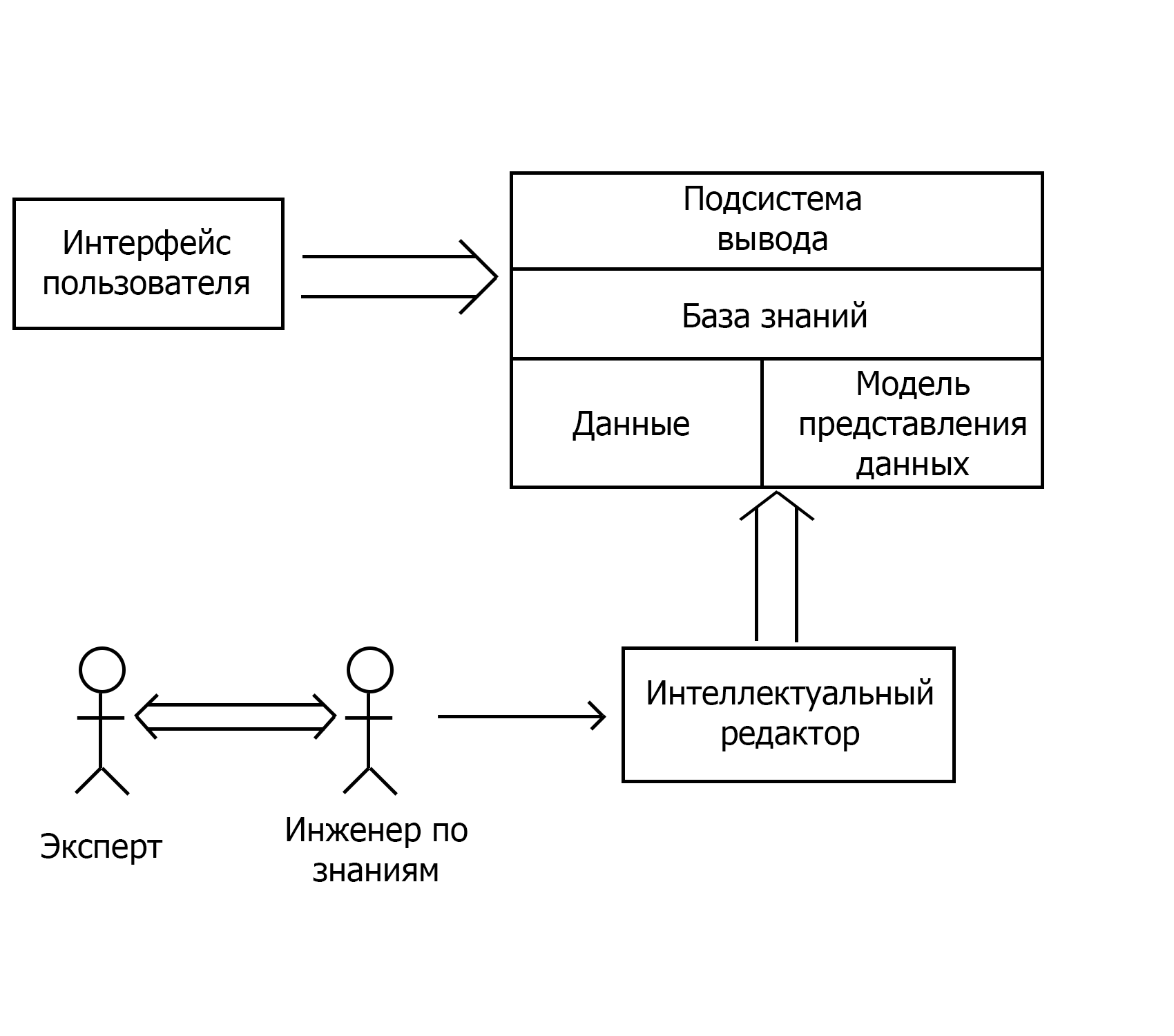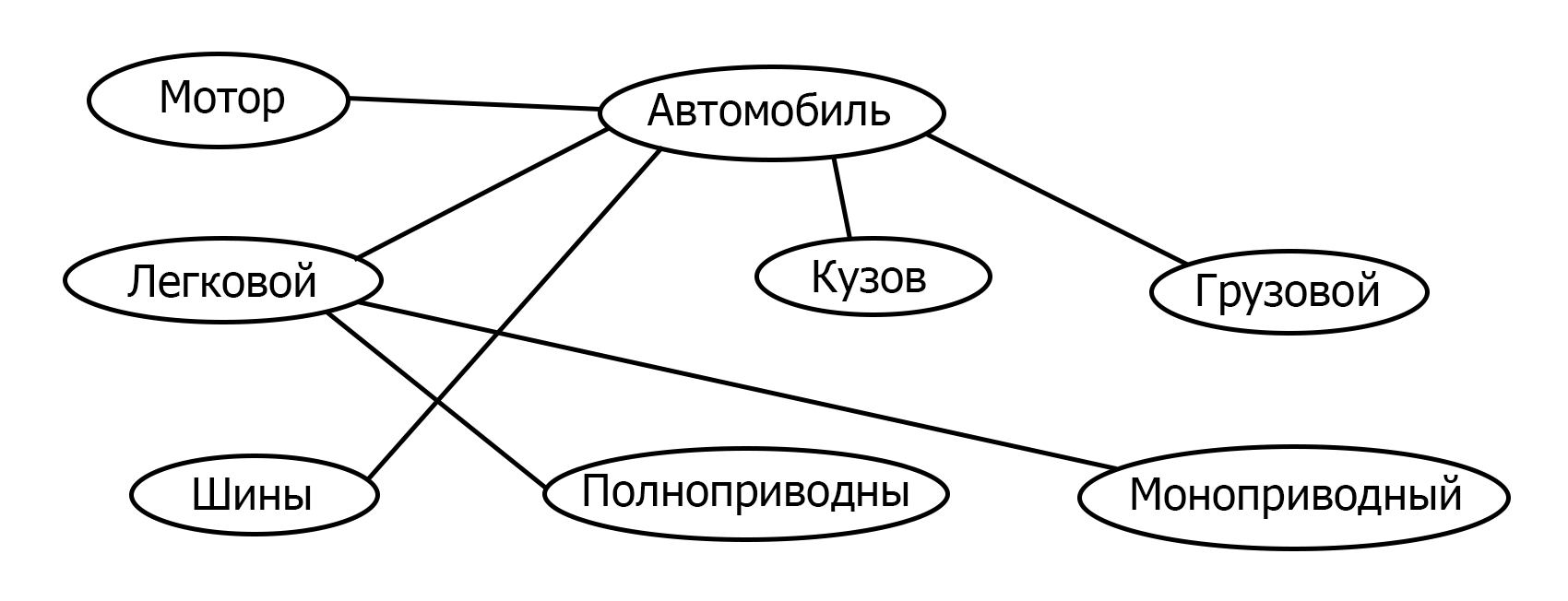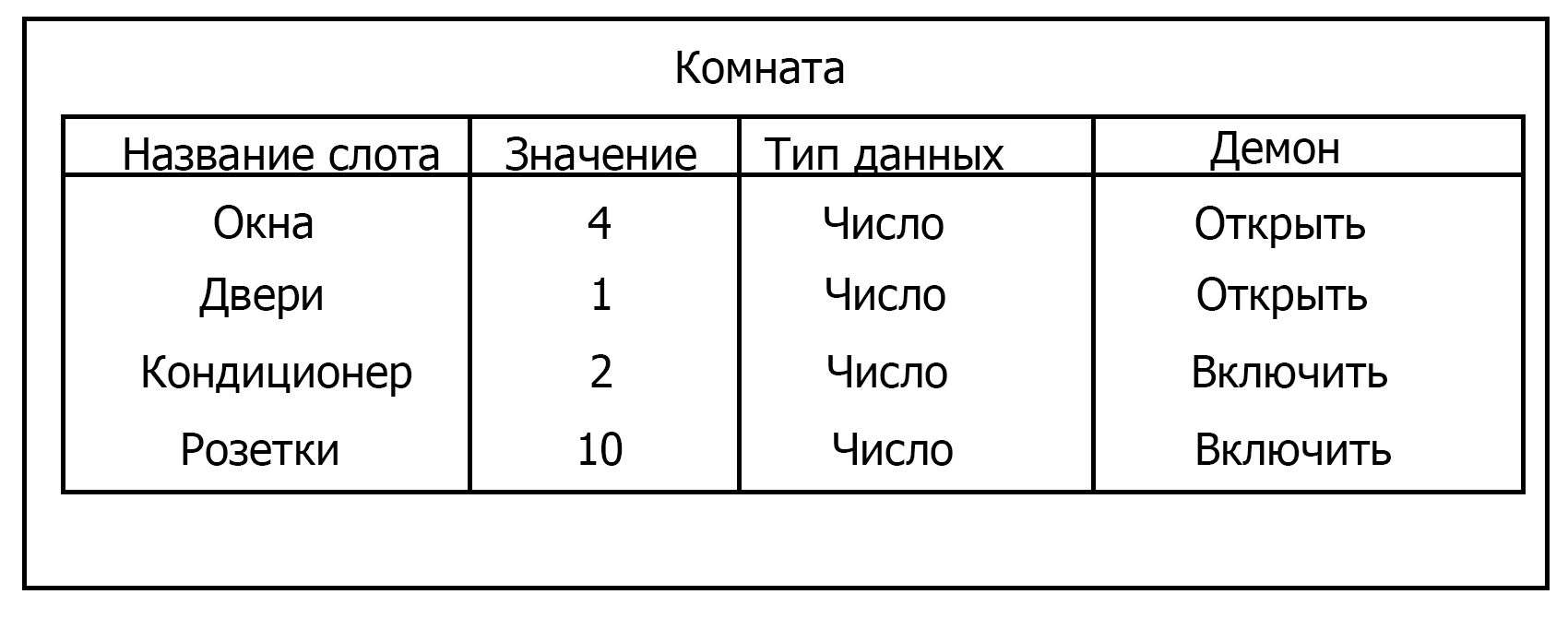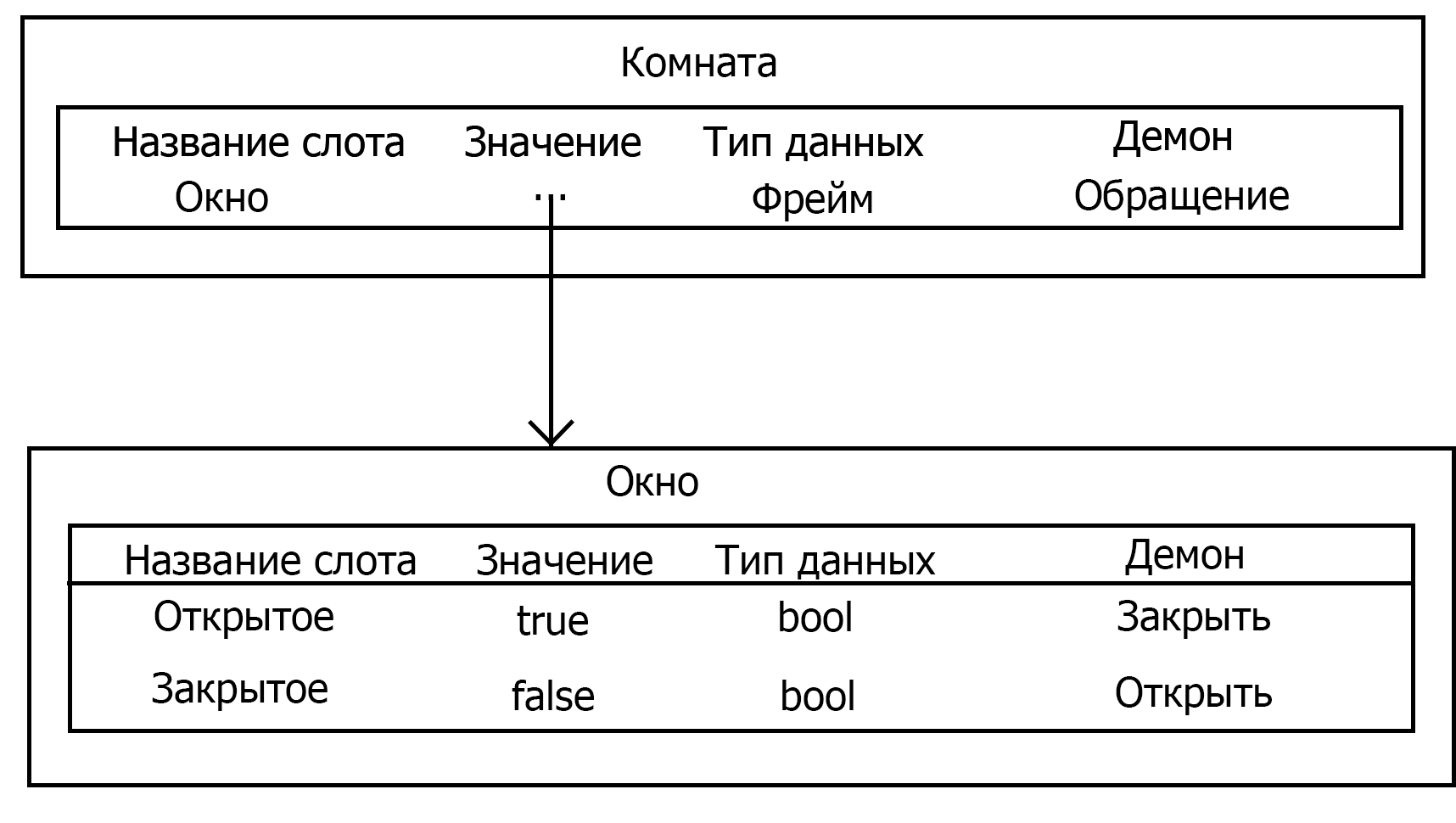Knowledge Representations in Intelligent Systems, Expert Systems
Introduction
The expert system ( hereinafter referred to as the ES ) is an information system, the purpose of which is to partially or completely replace an expert in a particular subject area. Such intelligent systems are effectively used in areas such as logistics, air traffic control, theater management. The main directional activity is prediction, forecasting within a certain aspect in the subject area.
Excursion into the history of expert systems
The history of expert systems dates back to 1965. Bruce Buchanan and Edward Feigenbaum began work on creating an information system for determining the structure of chemical compounds.
The result of the work was a system called Dendral. The system was based on a sequence of rules similar to “IF - THEN”. The information system has not ceased to develop and has received many heirs, such as ONCOIN - an information system for the diagnosis of cancer, MYCIN - an information system for the diagnosis of pulmonary infectious diseases.
The next stage was the 70s. The period was not distinguished by special developments. Many different prototypes of the Dendral system have been created. An example is the PROSPECTOR system, whose field of activity was geological minerals and their exploration.
In the 80s a profession appeared - a knowledge engineer. Expert systems are gaining popularity and are entering a new stage in the evolution of intelligent systems. There are new medical systems INTERNIS, CASNE.
Since the 90s, the development of intelligent systems has acquired new and new methods and features. An innovation is the paradigm of designing efficient and promising systems. Flexibility, clarity of the solution of the tasks set gave a new name - multi-agent systems. An agent is a background process that acts for the user's purpose. Each agent has its own purpose, "mind" and is responsible for its area of activity. All agents together form a kind of intelligence. Agents enter into competition, set up relationships, cooperate, all as in humans.
In the 21st century, the intellectual system will not surprise anyone. Many companies are introducing expert systems in their field of activity.
The high-speed OMEGAMON system has been developed since 2004 with IBM, whose goal is to track the status of the corporate information network. It is used for instant decision making in critical or adverse situations.
G2 is an expert system from Gensym, aimed at working with dynamic objects. The peculiarity of this system is that parallelization of thinking processes has been implemented in it, which makes it faster and more efficient.
The structure of the expert system

1. Knowledge Base
Knowledge is the rules, laws, laws obtained as a result of professional activity within the subject area.
Knowledge Base - a database containing inference rules and information about human experience and knowledge in a certain subject area. In other words, it is a set of such laws that establish connections between the input and output information.
2. Data
Data is a collection of facts and ideas presented in a formalized form.
Actually on the data are based patterns for prediction, prediction. Advanced intelligent systems are able to learn from this data, adding new knowledge to the knowledge base.
3. Model of data presentation
The most interesting part of the expert system.
The knowledge representation model (hereinafter referred to as the MPZ) is a way of defining knowledge for storage, convenient access and interaction with them, which fits the task of an intelligent system.
4. The mechanism of logical data output (output subsystem)
The mechanism of logical inference (hereinafter - MLE) of data performs analysis and does work on obtaining new knowledge based on the comparison of the initial data from the database and the rules from the knowledge base. The mechanism of logical inference in the structure of the intellectual system occupies the most important place.
The mechanism of logical inference can be conceptually represented as <A,B,C,D> :
A - the function of choice from the knowledge base and from the database of laws and facts, respectively
B - the function of checking the rules, the result of which determines a set of facts from the database to which the rules apply
C - a function that determines the order in which the rules are applied, if as a result of the rule identical facts are indicated
D is a function that applies an action.
What are the knowledge representation models?
Distributed four main inventories:
- Production MPZ
- Semantic network of MPZ
- Frame MPZ
- Formally logical MPZ
Production MPZ
The basis of the production model of knowledge representation is the constructive part, the product (rule):IF <>, THEN <>
The product consists of two parts: the condition is the antecedent, the action is the consequent. Conditions can be combined using the logical functions AND, OR .
Antecedents and sequential composed rules are formed from attributes and values. Example : IF THEN
The database of the production system stores the rules, the truth of which is set to earlier when solving a specific task. The rule is triggered if, when comparing the facts contained in the database with the antecedent of the rule that is being tested, there is a coincidence. The result of the rule is entered into the database.
Example
| Diagnosis | Temperature | Pressure | Cough |
|---|---|---|---|
| Flu | 39 | 100-120 | there is |
| Bronchitis | 40 | 110-130 | there is |
| Allergy | 38 | 120-130 | Not |
Product example:IF = 39 AND = AND = 110-130 THEN
The production model of knowledge representation has found wide application in the process control system
Production System Development Environments (CLIPS)
CLIPS (C Language Integrated Production System) - a production model development environment developed by NASA in 1984. The environment is implemented in C, precisely because it is fast and efficient.
Example:
(defrule bronchitis // deftule , (symptoms (temperature 39) (cough true)(pressure "110-130")) // 39, , 110-130 => (printout t " - " crlf)) // The similar rule will be activated only when the fact of a symptom with similar parameters appears in the database.
Semantic network of MPZ
The production model is based on a directed graph. The vertices of the graph - concepts, arcs - the relationship between concepts.
A special feature is the presence of three types of relationships:
- class - subclass
- property - value
- example class member
By the number of types of relationships, homogeneous and heterogeneous semantic networks are distinguished. Homogeneous have one type of relationship between all concepts, therefore, not homogeneous I have many types of relations.
All types of relationships:
- part - whole
- class - subclass
- element - quantity
- attributive
- logical
- linguistic
Example

The disadvantage of MPZ is the difficulty in extracting knowledge, especially with a large network, you need to bypass the graph.
Frame MPZ
He proposed Marvin Minsky in 1970. The frame model is based on the frame model. A frame is an image, a frame, a template that describes an object in the domain, using slots. A slot is an attribute of an object. A slot has a name, a value, a type of stored data, a daemon. Daemon - a procedure automatically executed under certain conditions. The frame name must be unique within the same frame model. The slot name must be unique within the same frame.
A slot can store another frame, then the frame model degenerates into a network of frames.
Example

An example of a network frame that degenerates

In my practice, I have come across systems based on frame MPZ. A system was installed at the university in Finland to manage electricity throughout the building.
Development languages of frame models (Frame Representation Language)
FRL (Frame Representation Language) is a technology created for the design of intelligent systems based on the frame model of knowledge representation. Mainly used for the design of a frame model degenerating into a network.
A frame entry in the FRL language will look like:
(frame Room // Room (windows (value(4), demon(open))) // windows 4 open (doors (value(1), demon(open))) // doors 1 open (conditioners (value(2), demon(turn on))) // conditioners 2 turn on (sokets (value(10), demon(turn on))) // sokets 10 turn on ) There are other environments: KRL (Knowledge Representation Language), frame wrapper Kappa, PILOT / 2.
Formally logical MPZ
The basis of a formally logical MPZ is a first-order predicate. It is understood that there is a finite, not empty set of domain objects. On this set, using the functions of interpreters, connections are established between objects. In turn, on the basis of these connections, all the laws and rules of the subject area are built. Important note: if the representation of the subject area is not correct, that is, the connections between the objects are not configured correctly or not fully, then the correct operation of the system will be under threat.
Example
A1 = < > A2 = < > A3 = <>; IF A1 AND A2 THEN < >
A trivial example and you can not imagine.
Important: It is worth noting that the formally logical MPZ is similar to the production one. This is partly true, but they have a huge difference. The difference is that in the production inventory, no links are defined between the stored objects of the domain.
Important
Any expert system must have a data output and a "thinking" sequence of the system. This is necessary in order to see defects in the design of the system. A good intellectual system should have the right to enter data, which is implemented through an intelligent editor, the editor's right to cross-think of ideas in designing a system and the completeness of knowledge bases (implemented in designing patterns of the subject area between a knowledge engineer and an expert).
Conclusion
Expert systems really have widespread use in our lives. They allow to save time of real experts in a certain subject area. Knowledge representation models are an integral part of intelligent systems of any level. Therefore, I believe that every self-respecting IT specialist should even have superficial knowledge in these areas.
Thanks for attention!
')
Source: https://habr.com/ru/post/346236/
All Articles